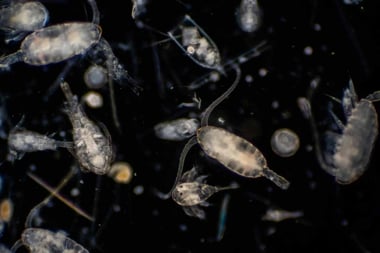The Complexities of Vitamin E

Vitamin E was first discovered in 1922 at the University of California in Berkeley, when research physician Dr. Herbert M. Evans and his assistant, Katherine S. Bishop, found that rats reared on a rancid lard diet failed to reproduce.
Vitamin E was first discovered in 1922 at the University of California in Berkeley, when research physician Dr. Herbert M. Evans and his assistant, Katherine S. Bishop, found that rats reared on a rancid lard diet failed to reproduce. Wheat germ and vegetable oils added to their diet restored fertility.
In the 1940s and 50s, Canadian doctors Evan and Wilfred Shute began using vitamin E to treat coronary and peripheral vascular disease.
Complex Chemistry
Compared with other fat-soluble vitamins (A, D, and K), the chemistry of vitamin E is quite complex. Eight naturally occurring forms can be found, including four different tocopherols and four similar tocotrienols, each with alpha, beta, gamma, and delta types. The most abundant and active form is alpha tocopherol, although each compound has its own unique strengths, biological activity, and function.
Tocopherols and tocotrienols are fairly stable to heat and acids but are unstable to alkalis, ultraviolet light, and oxygen. They are destroyed when in contact with rancid fats, lead, and iron. Since they are insoluble in water, vitamin E in foods is not extracted in cooking. Milling and bleaching flours, freezing, and deep-frying destroy most of the vitamin E present.
The Great Protector
Vitamin E protects vitamin A, carotene, and vitamin C in foods from oxidative destruction. Its action is enhanced when it is taken with selenium, zinc, and glutathione.
During digestion, vitamin E is absorbed from the intestines along with fat and bile salts, first into the lymph and then into the blood, which carries it to the liver to be used or stored. Some vitamin E is stored in the fatty tissues and to a lesser degree in the heart, muscles, testes, uterus, adrenal, and pituitary glands. It is partially absorbed through the skin.
The primary function of vitamin E is as an antioxidant. It serves to scavenge free radicals thus preventing the oxidation of unsaturated fats, cell membranes, DNA, and active enzyme sites. Other functions of vitamin E are to modulate the activity of immune and inflammatory cells (prostaglandins) and to inhibit platelet aggregation, thereby enhancing normal blood flow.
Potent Forms
Overall, tocotrienols are 40 to 60 times more potent antioxidants than tocopherols. Gamma tocopherol may be more effective than the alpha form as an antioxidant, particularly in bone, joint, muscle, and brain health. There is evidence that gamma tocopherol may benefit Alzheimer's disease patients by quenching the free radicals thought to be one of the causes of this disease.
Most vitamin E supplements available today consist of d-alpha tocopherol or, even less desirable, the "dl" tocopheryls that are synthetically made and even less potent in the human body. We know that nature produces these various tocopherols and tocotrienols together because of their synergism. Purchasing and using a mixed form of vitamin E is therefore advisable. If using an anticoagulant (blood thinner), consult your physician for appropriate dosages.
Vitamin E is found in butter, egg yolk, milk fat, and liver, but the best sources are vegetable and seed or nut oils. Wheat germ oil is a rich source of vitamin E, but only if it's fresh. The oil spoils rapidly so keep it refrigerated, never frozen.




